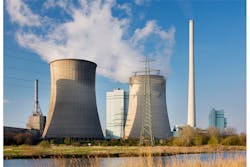For forward osmosis and other water recovery technologies, there’s more than just ZLD
Zero liquid discharge (ZLD) industrial applications currently receive a great deal of attention in the water industry press, but this most advanced level of wastewater treatment and reuse is really just the tip of a bigger iceberg. Certainly for the most water-stressed and water polluted regions of the world, industrial manufacturers and utilities have made strong regulatory pushes for increased ZLD adoption. The China power and coal-to-chemicals sectors are good examples, as are regions of India where all industrial manufacturers with wastewater discharge to river systems have been required to adopt ZLD technology. But high recovery water treatment technologies have many other application spaces and value propositions with high demand in the coming years. These applications are global and local in nature. They occur across multiple geographies and industry segments, but they are tied to specific local water scarcity, economic and legislative characteristics that collectively add up to a large application space for the technologies.
China water scarcity and economic expansion
In China’s industrial wastewater landscape, directives mandating ZLD and water reuse in certain industries and regions and their potential opportunities are exciting and daunting. These market drivers are closely connected to the way in which fresh water resources are distributed naturally across the country relative to where population concentrations and industrial expansion are located, particularly in coal-based industries. A 2013 Brookings Institute brief by Scott Moore lays out the big picture well. "China is blessed with the world’s fifth largest volume of freshwater, but on a per-capita basis it is well below the global average, at 2,000 m3 per person per year vs. 6,200 m3 per person per year. Freshwater resources per capita are highest in the mountainous and less populous southwest and is lowest in the north, where it is more arid and where the largest and fastest growing cities are, such as Beijing and Tianjin. In the north the per-capita average is below 500 m3/person/year." This water distribution discrepancy has driven a massive central government water plan which has led to water rebalancing and distribution projects such as the famous Three Gorges Dam.
The north of China also contains the country’s coal belt, where the expansion of coal power and coal-to-chemical industries are not only tremendous industrial water users, but are vitally important to China’s economic future and independence from foreign oil. A 2013 World Resources Institute (WRI) report detailed China’s plan to add 363 coal fired power plants to their national fleet, adding more than 550 gigawatts of capacity (75 percent) to the existing 758 gigawatts of coal power. A Bloomberg article based on the WRI report determined that 51 percent of these plants will be in the water-starved north of China, near the largest coal reserves. This points to why a strong push exists in China for ZLD and high recovery wastewater treatment tied to existing and newly built coal power plants. Coal-to-chemical manufacturing follows the same trends, concentrated in the north-central part of the country, requiring large annual volumes of freshwater., It is also mandated to include ZLD wastewater treatment. Financial Times in 2014 reported on 18 coal-to-chemical projects under construction in China with a total of 54 in the pipeline for possible construction. China’s water treatment design institutes, consultants and technology decision makers for the wastewater process technologies for these projects have sought out best-in-class technologies for reducing the energy consumption and cost of wastewater pretreatment, brine concentration and final crystallization of salts for disposal or resale. Given these enormous pressures, it is not surprising that they have also been among the early adopters of advanced technologies such as forward osmosis (FO) for high recovery treatment of waste streams such as flue gas desulfurization (FGD) wet scrubber blowdown, boiler feedwater treatment regeneration streams and cooling tower blowdown. Overall, the size, water complexity and sheer number of projects in China present a growth opportunity for advanced wastewater technologies through at least 2020 and are proving to be an exciting, if not challenging, new market for next generation water technologies.
India water pollution mitigation
India is another market where strict industrial water regulation had been implemented to mitigate serious river pollution issues and address water scarcity in many regions of the country. According to GWI research, only 30 percent of wastewater generated in India is treated in any way, including wastewater from municipal, commercial and industrial sources. For the industrial sector, the Indian government has promoted ZLD and near ZLD as wastewater mandates for the largest wastewater generators, which a 2013 International Water Management Institute report identified as the thermal power, steel and petrochemical industries. Transitioning these large water users and wastewater generators toward reuse and ZLD can reduce the consumption of freshwater and the volume of wastewater generated, but it will take time and new solutions.
The southern Indian state of Tamil Nadu is one example of the effective implementation of industrial water reuse and ZLD. In a 2014 case study presented at the International Conference on "Green Enterprises and Green Industrial Parks," Sajid Hussain, chief operations office of the Tamil Nadu Water Investment Co. presented on the region’s water problems and the adoption of ZLD. The regional regulations, central treatment plant funding and implementation began in the late 2000s and have already impacted nearly 600 processors. One-hundred and fifty of the largest constructed independent plants (typically 50 to 150 m3/day) and the rest either closed or sent wastewater to one of 20 central plants (typically 500 –to1000 m3/day). Problems with these early ZLD plants, due to suboptimal designs, seasonal and process-related water quality fluctuations and other issues, have become legendary in the region. And while enforcement of the regulations was not always thorough in the initial years, this is changing and has created opportunities for companies with ZLD experience and viable advanced water recovery technologies. Also, textile processing and other industries in the region continue to expand and require the capacities of their water recovery plants to grow as well. Advanced organics removal, forward osmosis (FO), other brine concentration and selective salt recovery technologies which can reduce water recovery costs and salt processing costs have the opportunity to prove their performance in Tamil Nadu and expand into the larger industrial wastewater markets in petroleum, power and steel. GWI predicts a doubling of demand in India for industrial wastewater treatment spending, from $1 billion in 2013 to $2 billion in 2020.
Saline wastewater volume reduction
A third, broad category of opportunities for high recovery water treatment technologies is in the area of enhanced water recovery and desalination effluent minimization. The industries and geographies for this treatment area are diverse but the drivers are similar — minimizing the risk and cost of wastewater discharge, transport, disposal or containment, coupled with the benefits of recovering a volume of water for reuse. In Australia for example, this could mean using FO or high recovery RO to recover an additional 60 to 70 percent of fresh water from a saline mining wastewater or coal seam gas co-produced water, and minimizing the discharge to an evaporation pond. In the US, shale gas and oil producers in the Permian and Eagle Ford regions of Texas weigh the costs of transporting produced waters to deep well injection sites versus recovering water for reuse, producing a high-density brine for wellsite use and minimizing wastewater transport. In the Middle East, industrial companies in nations such as Qatar and Oman find economic value in recovering and reusing additional water from RO system reject streams. FO and other technologies that can economically process the high-fouling RO reject streams and recover additional quantities of freshwater can provide significant value for new and existing RO plants.
In water-scarce regions, power and industrial users of recirculating cooling systems increasingly explore ways to recover and reuse cooling tower blowdown to reduce make-up water requirements and to reduce discharge volumes. Cooling water reuse is on the roadmaps of companies as diverse as the large petrochemicals producers, including Shell and BP, to large data center operators such as Google and Amazon. In the US, a new clean water act regulation, 316(b), places restrictions on once-through cooling water intakes, driving a shift to recirculating wet cooling with water reuse or to dry cooling systems.
Large mining operators in North America and South America are increasingly wary of mining and mine drainage wastewater storage and retention in response to the high-profile Gold King Mine spill in Colorado this past summer. In these contexts, high recovery wastewater treatment technologies provide a means to reduce discharge volumes by 70 percent or more, increase the lifetime of existing retention infrastructure and provide a source of water for reuse in the mining operation.
These are just a few of the many industrial applications for high salinity wastewater volume reduction across the globe. This growing demand, combined with the growth in water treatment regulation in coal power and related industries in China (India and South Korea also have aggressive coal power generation growth plans and associated water treatment mandates) and the water treatment infrastructure growth plans of India, add up to a large total available market for high recovery treatment technologies. New options for the engineers specifying and designing the next generation of wastewater treatment process flows must be prepared to demonstrate commercial viability, energy and cost reduction, and the ability to treat these challenging waters at scale reliably and consistently.
Photo courtesy of Oasys Water
John Tracy, director of marketing at Oasys Water, has more than 15 years of experience in product management and strategic marketing and more than 10 years of power industry and industrial water treatment experience with membrane systems. He has written on topics in water treatment, power and semiconductor manufacturing. Oasys Water is a provider of integrated forward osmosis (FO) systems for high recovery desalination, including brine management and zero liquid discharge (ZLD). The company’s ClearFlo systems are used in various industrial markets and in areas of extreme water scarcity.

